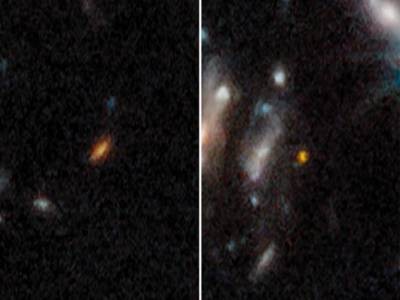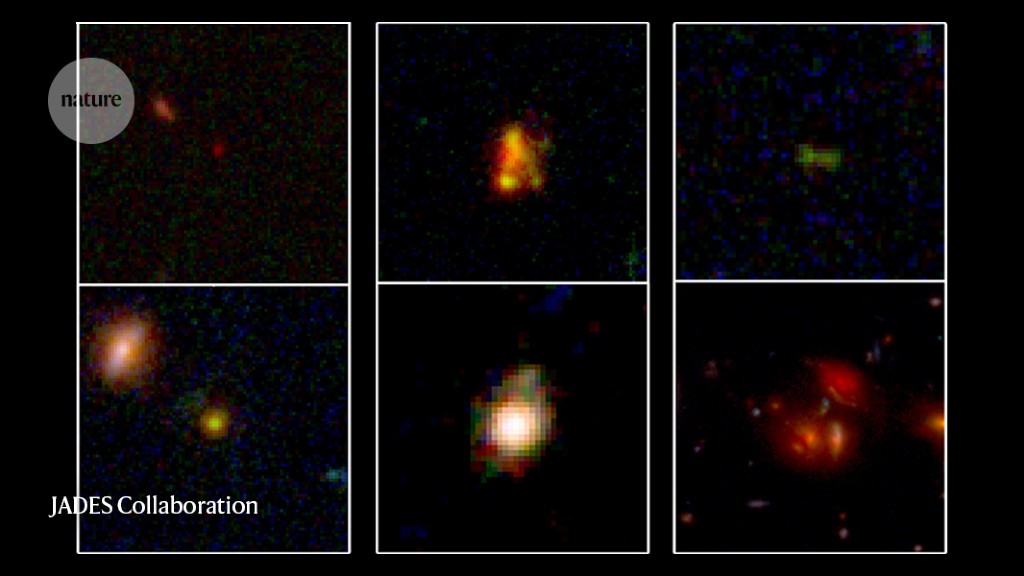
This month, researchers unveiled outcomes from one of many greatest and deepest astronomical surveys of the evening sky carried out by the James Webb House Telescope (JWST). The trouble has recognized among the earliest galaxies ever seen — from inside the first 650 million years after the Universe was born within the Large Bang. And the findings have been dazzling astronomers, revealing that stars and galaxies had been forming and evolving a lot sooner than anybody had suspected.
JWST spots among the most distant galaxies ever seen
<script type=”text/javascript”> atOptions = { ‘key’ : ‘015c8be4e71a4865c4e9bcc7727c80de’, ‘format’ : ‘iframe’, ‘height’ : 60, ‘width’ : 468, ‘params’ : {} }; document.write(‘<scr’ + ‘ipt type=”text/javascript” src=”//animosityknockedgorgeous.com/015c8be4e71a4865c4e9bcc7727c80de/invoke.js”></scr’ + ‘ipt>’); </script><\/p>
The venture, generally known as the JWST Superior Deep Extragalactic Survey (JADES), peered at a number of patches of sky, together with one within the constellation Fornax — made well-known in 2004 after the Hubble House Telescope stared at it for 11 days, revealing hundreds of galaxies. In contrast to Hubble, nevertheless, JWST operates primarily at infrared wavelengths of sunshine, making it excellent for recognizing extraordinarily distant galaxies, the sunshine from which is stretched because the Universe expands, making it seem redder.
Starlight from these objects has travelled such nice distances that they appear as they didn’t lengthy after the Large Bang occurred, 13.8 billion years in the past. Astronomers measure distance utilizing an element generally known as redshift: the upper the redshift, the extra distant the article.
Earlier than JWST was launched in 2021, just a few dozen galaxies had been noticed at redshifts larger than 8. JADES has recognized a whopping 717 galaxies which can be in all probability on this vary1. Right here, astronomers assist Nature make sense of the information deluge by selecting a few of their favorite galaxies (listed from essentially the most distant to the least) and explaining what the objects can train us concerning the early days of the Universe.
The document holder
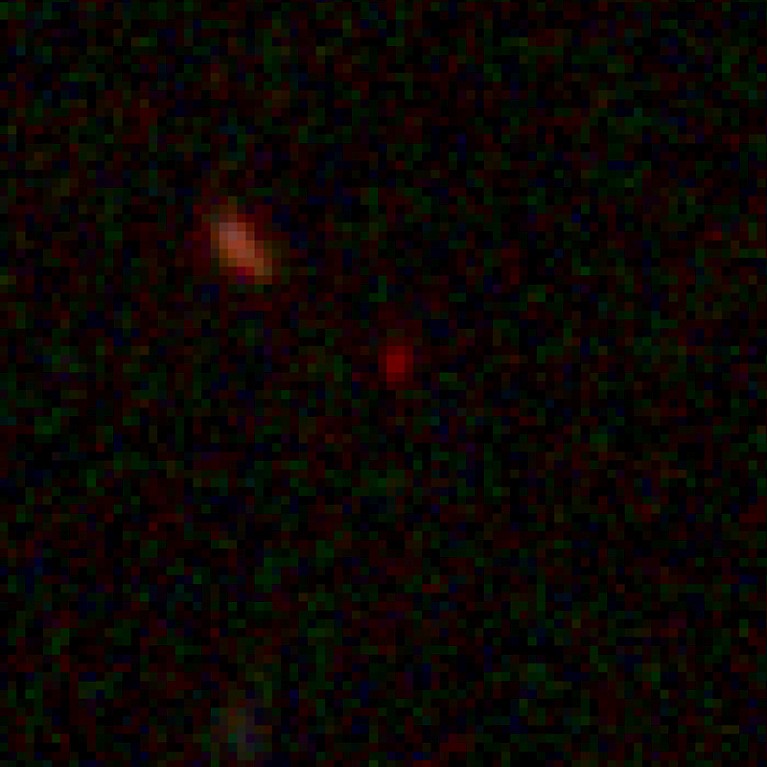
The document holder.Credit score: JADES Collaboration, B.E. Robertson et al./Nature Astronomy
This blurry purple blob won’t appear like a lot, however it’s the present document holder for essentially the most distant object identified within the Universe. JWST found the galaxy, generally known as JADES-GS-z13-0, late final yr after which confirmed2, by way of detailed research of its starlight, that it lies at a redshift of 13.2. Which means it appears to be like because it did simply 320 million years after the Large Bang.
The galaxy is bodily small, just some hundred gentle years throughout, however is pumping out new stars at a price akin to the Milky Manner right now, says Brant Robertson, an astronomer on the College of California, Santa Cruz. That’s exceptional as a result of scientists had thought that the primary galaxies to type within the Universe would come collectively slowly as stars ignited and coalesced. JADES-GS-z13-0 and different such objects present3 that early galaxies had been hotbeds of star formation.
“These galaxies are the constructing blocks of construction within the Universe,” says Kevin Hainline, an astronomer on the College of Arizona in Tucson. With JWST, he provides, “we’re seeing them in every single place”.
The glowing canine bone
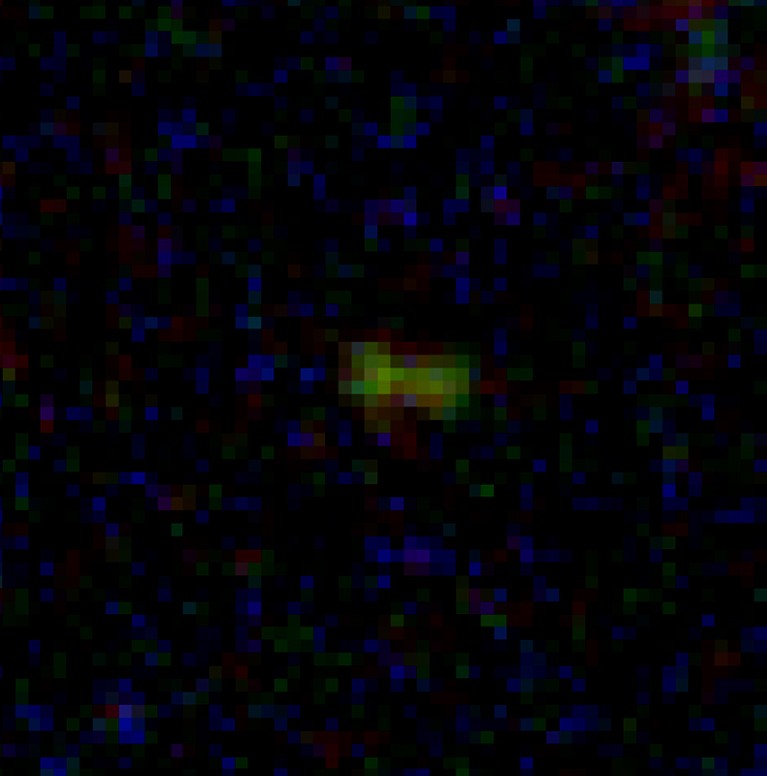
The glowing canine bone.Credit score: JADES Collaboration
Researchers suppose that this dog-bone-shaped object is at a redshift of 11.3, though that distance nonetheless must be confirmed. Assuming it’s, then it seems because it was round 400 million years after the Large Bang.
JWST is discovering extra construction early on within the Universe than anybody had anticipated: the canine bone appears to be two smaller galaxies within the strategy of coalescing. So, by 400 million years after the Large Bang, the Universe had already shaped stars that grouped into galaxies, and two of these galaxies had come collectively.
Earlier than JWST started surveying the evening sky, scientists had not thought that a lot galactic motion was attainable so early within the Universe. “I didn’t anticipate to see these kind of objects in any respect in our information,” Hainline says.
The one with (possibly) the primary stars
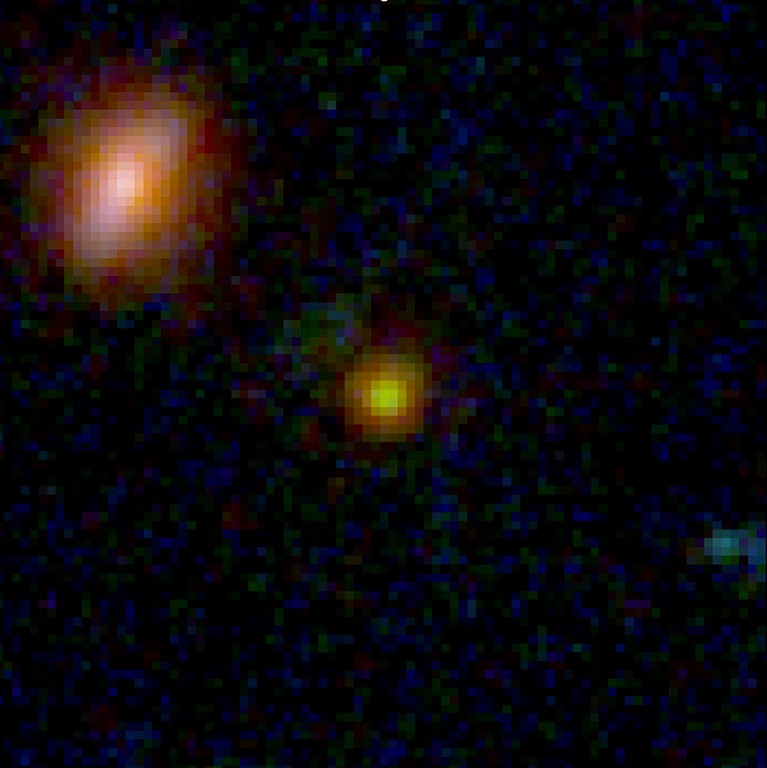
The one with (possibly) the primary stars.Credit score: JADES Collaboration, S. Tacchella et al./arXiv (CC BY 4.0)
At a redshift of 10.6, this galaxy is surprisingly vivid at simply 430 million years after the Large Bang, Robertson says. First noticed with Hubble, the galaxy, referred to as GN-z11, seems as an extremely compact vivid sphere beneath JWST’s gaze4. That brightness would possibly come from a large black gap at its centre, round which superheated fuel and mud spiral5.
Different JWST observations counsel that this galaxy incorporates among the first stars to type within the Universe6. The proof, within the type of chemically uncommon pockets of primordial helium fuel across the edges of the galaxy, is tentative.
However the very first stars would have been made principally of hydrogen and helium, with only a few different chemical components. That’s precisely what JWST may need noticed in GN-z11. If that’s the case, it might fulfil astronomers’ long-standing dream of detecting these stars.
The large clumpy one
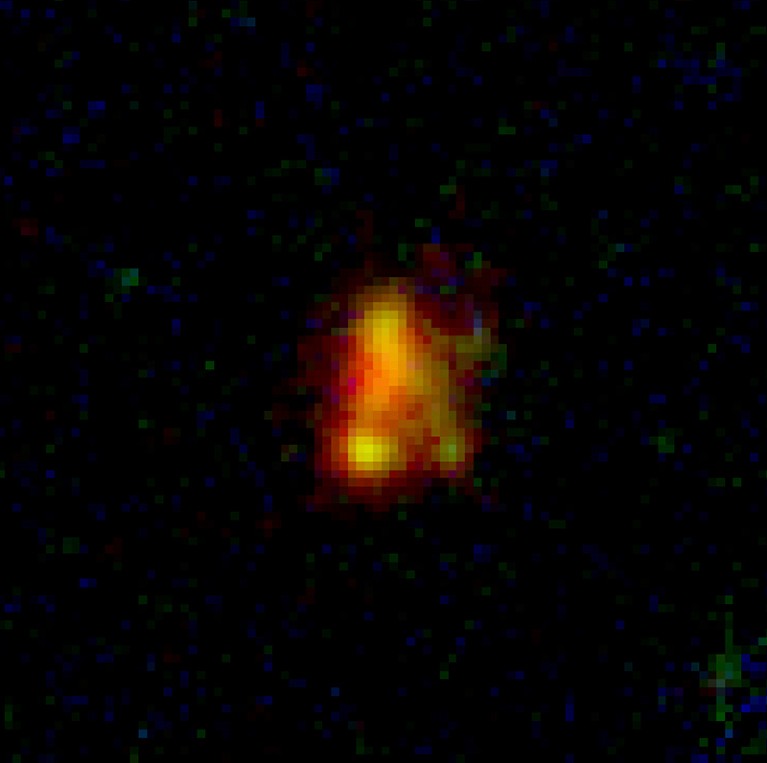
The large clumpy one.Credit score: JADES Collaboration, Okay. N. Hainline et al./arXiv (CC BY 4.0)
This bulbous galaxy lies at a redshift of 8, placing it round 300 million years later than the document holder. Given the clumpy construction it has developed, nevertheless, these 300 million years will need to have been action-packed.
If the 13.8 billion years of the Universe’s historical past had been compressed to a two-hour movie, the primary 5 minutes — which arrange the plot for every thing that follows — would present all of the early galaxies that JWST is discovering, Hainline says. And this monumental galaxy, which spans some 3.7 kiloparsecs (12,000 gentle years), signifies that the Universe was dynamic from the start.
The within-out one
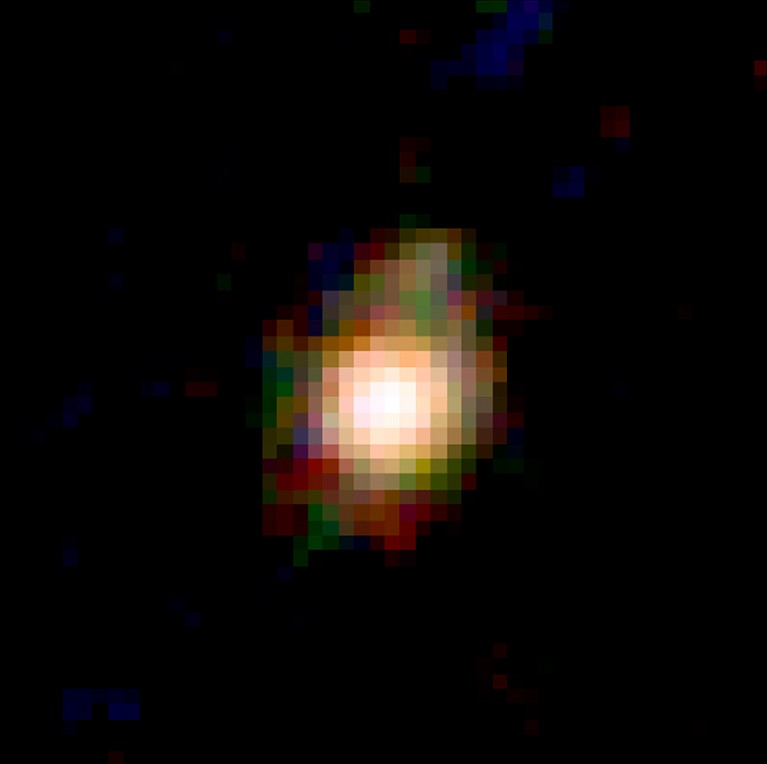
The within-out one.Credit score: JADES Collaboration, W. M. Baker et al./arXiv (CC BY 4.0)
This small galaxy, seen because it was 700 million years after the Large Bang, has extra stars forming in its outskirts than in its centre.
“It’s the first time we will quantify inside-out progress at such an early stage” of the Universe, says Sandro Tacchella, an astrophysicist on the College of Cambridge, UK. That’s stunning as a result of principle suggests the other — that early galaxies ought to have stars forming nearer to their centres.
This galaxy appears to have gotten began instantly, forming as many stars in its compact coronary heart as massive galaxies have now7. After that, it turned to creating stars in its outskirts, which is the stage at which astronomers can see it right now.
The cosmic rose

The cosmic rose.Credit score: JADES Collaboration, D. J. Eisenstein et al./arXiv (CC BY 4.0)
This floral-like gathering of very dusty, very purple galaxies caught the attention of the JADES group virtually instantly, garnering the nickname the cosmic rose.
“It has a particular place within the group’s coronary heart,” says Stacey Alberts, an astronomer on the College of Arizona in Tucson. “Science-wise, it’s a wonderful demonstration of JWST’s leap ahead in understanding how purple the Universe is.”
The rose’s galaxies are in all probability not bodily associated to at least one one other, as a result of they lie at various distances encompassing redshifts from 2.5 to three.9. However these values put them on the coronary heart of ‘cosmic midday’, a interval round three billion years after the Large Bang, when galaxies shaped stars so rapidly and furiously that they produced many of the stars identified within the Universe right now.
